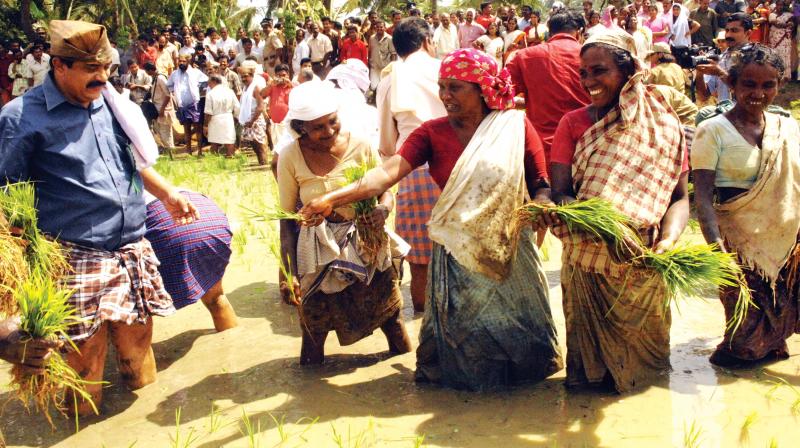2016 Year of Change: Set on green route
So the maintenance of rice cultivation and rice culture has become an ecological necessity rather than one of a mere commodity shortage.

Kerala witnessed some early signs of change in 2016. Some welcome changes, some fraught with repercussions. Society will be watching if these signals become a trend in days ahead. It can be a boon or bane depending on how state tackles them.
Kerala is now 60. Even when it was a year old, the State produced only 50 percent of its rice requirement. Unfortunately, it has shrunk to 15 percent!
The State’s only alternative is to depend on the Centre for rice. The country is an exporter of rice but the Centre is not in a position to provide adequate rice to Kerala. The current crisis is the difference in BPL lists with the State and Centre. The number of beneficiaries on the State BPL is much more than that the Centre recognizes as genuine.
When India attained self-sufficiency in grains in 1977, Kerala struggled for rice. The high cost of production and expensive labour forced farmers in Kerala to leave rice cultivation and shift to lucrative crops like rubber and other perennial crops. These two factors forced farmers and the farm labour to leave farms, resulting in the shrinkage of area under rice from 9 lakh ha to less than 2 lakh hectares. Large rice tracks are left barren.
This has not only resulted in the shortage of rice production but also in the poor supply of drinking water. It is slowly creating an ecological disaster. So the maintenance of rice cultivation and rice culture has become an ecological necessity rather than one of a mere commodity shortage.
It is in this context the State Government has decided to increase the paddy cultivation from 2 lakh to 3 lakh hectares. It is a formidable task but it is achievable. Bringing more than 1 lakh hectare under rice culture has now been attempted as a massive peoples’ movement.
Haritha Keralam inauguration was commendable as 16,000 gatherings were organized in fallow spots across the State. More than 5 million people participated in this programme. The beginning is good, but how far and how long can the enthusiasm be sustained is the biggest challenge.
The reason is that currently the State is facing one of its worst droughts. We have already lost both the monsoons this year. The only season that is left is Puncha season and Punja crop needs very strong irrigation support in areas other than Kuttanad.
In this context the State Government has shifted the emphasis from rice to organic farming, which includes banana and vegetable farming and other seasonal crops. This is a wise decision. But even this requires very huge irrigation support. In short, the approach to rice culture requires a big welcome shift as the programme should not be confined to just one season. It should be a five year programme covering at least 10 seasons, which should be contiguous so that the entire infrastructure and the popular movement should be kept active. Usually what happens is that all such programmes are seasonal and after a while the infrastructure and the organizers wither away.
Remember in this context that it is the rice fields that keep Kerala green and its water table intact. When we had rice fields covering over 9 lakh hectares we faced neither drought nor shortage of water. Almost all our traditional water sources including our wells are drying up. It is because of this fact that rice fields have shrunk. So rice cultivation should be seen as a green programme and a massive drinking water project. The money spent on it should not be calculated on returns in terms of rice.
(Author is former agriculture director, who set up Farm Information Bureau)

